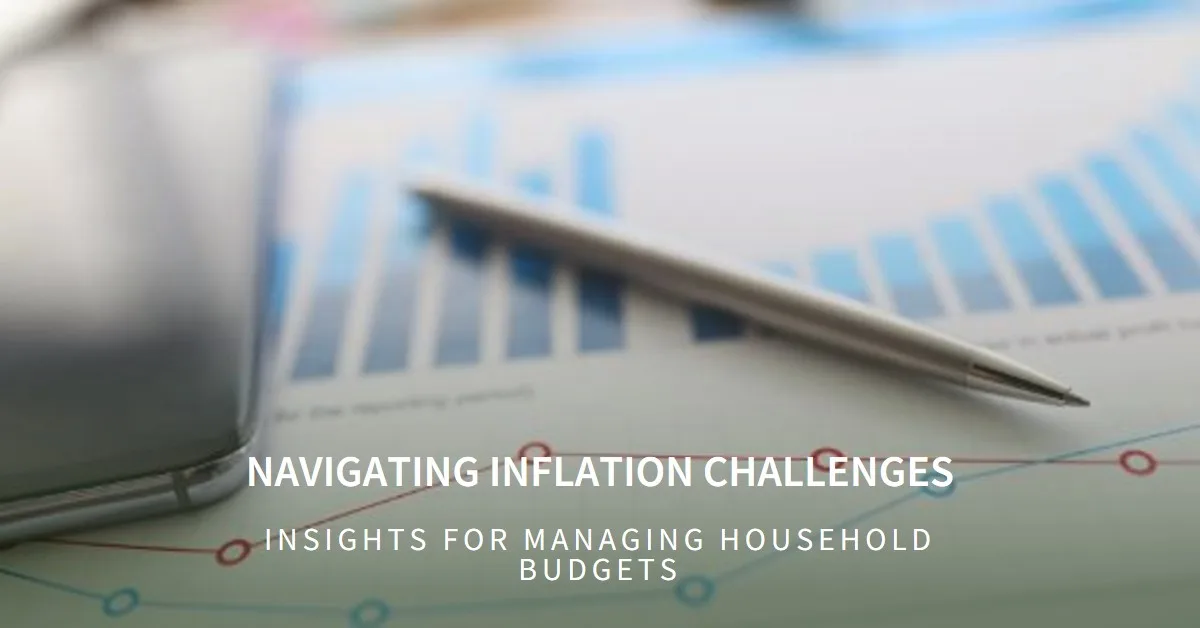Inflation in India has been steadily rising, impacting the cost of living for millions of households across the country. As prices for essential goods and services increase, families find themselves spending more to maintain the same standard of living. This blog delves into the recent inflation trends in India, how they are affecting household budgets, and offers practical tips to help families manage their finances in the face of rising costs.
Understanding the Current Inflation Trends in India
India has been grappling with inflationary pressures influenced by a combination of factors such as global supply chain disruptions, rising fuel prices, and domestic agricultural challenges. According to recent reports, inflation in India has been primarily driven by the following key components:
- Food Prices: Staple items like vegetables, grains, and pulses have seen considerable price hikes due to unpredictable weather conditions affecting crop yields.
- Fuel Costs: The volatility in global oil prices has translated into higher transportation and energy costs, impacting nearly all consumer goods.
- Housing and Utilities: Rental prices and utility costs, such as electricity and cooking gas, have also seen an uptick, further burdening household budgets.
In the lead-up to 2024, economists predict that inflation rates may remain elevated, with fluctuations depending on global economic conditions and domestic policy responses.
Related: How Inflation Affects Your Savings and Investments – Learn how inflation impacts long-term financial goals and ways to protect your savings.
Effects of Inflation on Household Budgets
Inflation directly affects household finances, as families must adjust their spending to account for higher costs. Here are some of the most significant impacts of inflation on household budgets in India:
- Increased Cost of Essentials
Rising prices for food, fuel, and utilities mean that a larger portion of household income is allocated toward basic needs. For families with fixed incomes, this can lead to reduced disposable income, limiting their ability to save or spend on non-essential items. - Strain on Savings
With everyday expenses on the rise, families may find it challenging to maintain their previous savings rate. As a result, many households have to dip into their savings to cover monthly expenses, potentially impacting long-term financial goals like education funds or retirement. - Reduced Purchasing Power
Inflation erodes the value of money, meaning that households need more funds to purchase the same goods and services. This reduction in purchasing power can lead to decreased spending on leisure, recreation, and luxury items as families focus on necessities. - Impact on Debt Repayments
Households with existing loans may feel the pinch as inflation indirectly affects interest rates. While fixed-rate loans remain unaffected, variable-rate loans, such as credit card debt or certain types of home loans, may become more expensive, adding to financial strain.
External Link: For up-to-date inflation statistics in India, refer to the Reserve Bank of India’s inflation reports.
Tips for Managing Household Budgets Amid Rising Inflation
With inflation expected to continue influencing prices in 2024, families need to adopt proactive strategies to manage their finances effectively. Here are some practical tips:
- Prioritize Essential Spending
Focus on necessities like groceries, rent, and utilities, and limit discretionary spending. By identifying and cutting back on non-essential purchases, households can better manage their monthly budgets. - Create a Monthly Budget and Track Expenses
A detailed budget can help families monitor their spending and identify areas where they can save. Regularly reviewing expenses and adjusting for price increases can provide more control over household finances. - Bulk Buying and Discount Shopping
Purchasing essentials in bulk and taking advantage of discounts or sales can help reduce costs over time. For non-perishable items, bulk buying can provide savings that offset inflationary pressures. - Energy Efficiency
With rising utility costs, consider adopting energy-efficient practices, such as using LED bulbs, reducing electricity usage during peak hours, and optimizing appliance usage. Small adjustments can significantly lower monthly utility bills. - Explore Fixed-Rate Loans for Stability
For those looking to finance large purchases or refinance existing debt, consider fixed-rate loans. They offer more predictable monthly payments, which can be beneficial in a fluctuating interest rate environment. - Invest in Inflation-Protected Savings
Investments that provide inflation protection, such as inflation-indexed bonds, can be valuable in preserving purchasing power. Researching savings options that grow with inflation can help families safeguard their finances.
Related: Top Budgeting Apps for Indian Households – Explore digital tools that make tracking expenses and managing finances easier.
What to Expect Going into 2024
Inflation is likely to remain a significant concern for Indian households as 2024 approaches. Factors that may influence inflation include:
- Global Economic Uncertainty: Any disruptions in global markets, particularly in commodity prices, could directly impact domestic inflation.
- Government Policy Measures: The Reserve Bank of India may introduce additional measures to curb inflation, which could include interest rate adjustments or policies to ease food price pressures.
- Supply Chain Stability: A more stable global supply chain may help reduce the cost of imports, including fuel and certain consumer goods, potentially easing some inflationary pressures.
By staying informed and adapting to changes, households can better manage the impact of inflation on their daily lives. Families are encouraged to monitor financial news, keep an eye on RBI’s announcements, and seek financial guidance when necessary.
External Link: To learn more about inflation trends in 2024, read the Economic Survey of India.
Conclusion
Inflation remains a pressing issue for households across India, affecting their ability to save and maintain their standard of living. By understanding the factors driving inflation and adopting practical budgeting strategies, families can better cope with rising costs. While inflation trends may vary in the coming year, proactive financial management will help households adapt to economic shifts, making it easier to achieve financial stability.
For more financial advice and budgeting tips, check out our Household Finance Guide to stay updated on the best ways to manage your money amidst economic challenges.
How to Manage Inflation in India Across Every Sector in 2025
Introduction
As India continues to experience inflationary pressures, businesses and consumers alike face the challenge of managing rising costs. Different sectors—including agriculture, manufacturing, retail, and services—are impacted in unique ways, requiring tailored strategies for effective inflation management. This guide covers practical strategies for various sectors to help businesses and individuals navigate inflation in 2025.
1. Agricultural Sector
The agricultural sector often faces direct inflationary effects due to fluctuating input costs, such as fertilizers, seeds, and fuel. Here are some strategies:
- Adopt Precision Agriculture: Using technology like soil sensors, drones, and AI-based predictions can optimize resource use, lowering costs and reducing waste.
- Invest in Resilient Crop Varieties: Utilizing drought-resistant or pest-resistant crop strains can mitigate losses caused by adverse climate conditions, which affect inflationary pressures on food prices.
- Collaborate with Cooperatives: Farmers can join cooperatives to reduce procurement costs and gain better market access, strengthening their position against inflation-driven price hikes.
Related: Top Technologies in Indian Agriculture for 2025 – Discover how technology can revolutionize the Indian agricultural landscape.
2. Manufacturing Sector
Manufacturing companies face inflation in raw material costs, energy prices, and transportation. Key strategies include:
- Optimize Supply Chains: Diversifying suppliers and sourcing locally can mitigate global price fluctuations and reduce transportation costs.
- Increase Energy Efficiency: Investing in renewable energy sources and energy-efficient machinery can help manage rising energy costs.
- Adopt Lean Manufacturing: This approach reduces waste and increases efficiency, lowering costs without compromising product quality.
External Link: Government Initiatives to Support Indian Manufacturing.
3. Retail Sector
The retail industry faces inflation both directly through higher supplier costs and indirectly via reduced consumer spending power. Retailers can manage inflation by:
- Dynamic Pricing: Using data analytics to adjust prices in real time based on demand can help maintain profitability.
- Focus on Private Labels: Selling store-brand products can reduce dependency on costly brand-name items, offering consumers affordable options and boosting margins.
- Bulk Procurement: Buying in bulk from suppliers can secure lower prices, allowing for more competitive consumer pricing.
Related: How Indian Retailers Are Adapting to Inflation – Learn more about innovative strategies in the retail sector.
4. Service Sector
In service-oriented sectors, such as healthcare, hospitality, and IT, inflation impacts operational costs, including salaries and supplies. Effective strategies include:
- Invest in Employee Training: Building a skilled workforce can reduce turnover, saving on recruitment and training costs.
- Automate Administrative Tasks: Automation can help cut down on operational costs, freeing up resources for other essential expenses.
- Diversify Service Offerings: Offering a range of services can attract new clients and increase revenue streams, balancing inflationary impacts on costs.
External Link: Inflation Trends in India’s Service Sector.
5. Real Estate and Construction
The real estate sector is highly sensitive to inflation due to material and labor costs. Strategies include:
- Negotiate Long-Term Contracts: Locking in prices with suppliers can help manage material costs over time.
- Focus on Sustainable Materials: Using sustainable materials not only reduces costs but can also attract eco-conscious buyers, increasing sales potential.
- Improve Project Efficiency: Streamlining construction timelines through better project management can cut down on labor and material costs.
Related: Sustainable Real Estate Trends in India 2025 – Explore how sustainability is reshaping the real estate market.
6. Energy Sector
Inflation in the energy sector, particularly fossil fuels, impacts all other sectors. Key strategies include:
- Invest in Renewable Energy: Expanding renewable energy capacity can reduce dependency on volatile fossil fuel prices.
- Improve Energy Storage: Better storage solutions, such as battery technology, help manage supply and demand, keeping prices more stable.
- Enhance Infrastructure: Upgrading infrastructure to be more efficient can lower operational costs and improve energy distribution.
External Link: Government Support for Renewable Energy in India.
Conclusion
Inflation is an unavoidable part of economic growth, but each sector can take targeted actions to mitigate its impact. By leveraging technology, optimizing resources, and focusing on efficiency, India’s industries can better navigate inflation in 2025. Whether you’re an individual, business owner, or policymaker, adopting proactive strategies is essential to sustain growth in an inflationary environment.
For more tips and sector-specific insights, follow our Inflation Management Guide.










